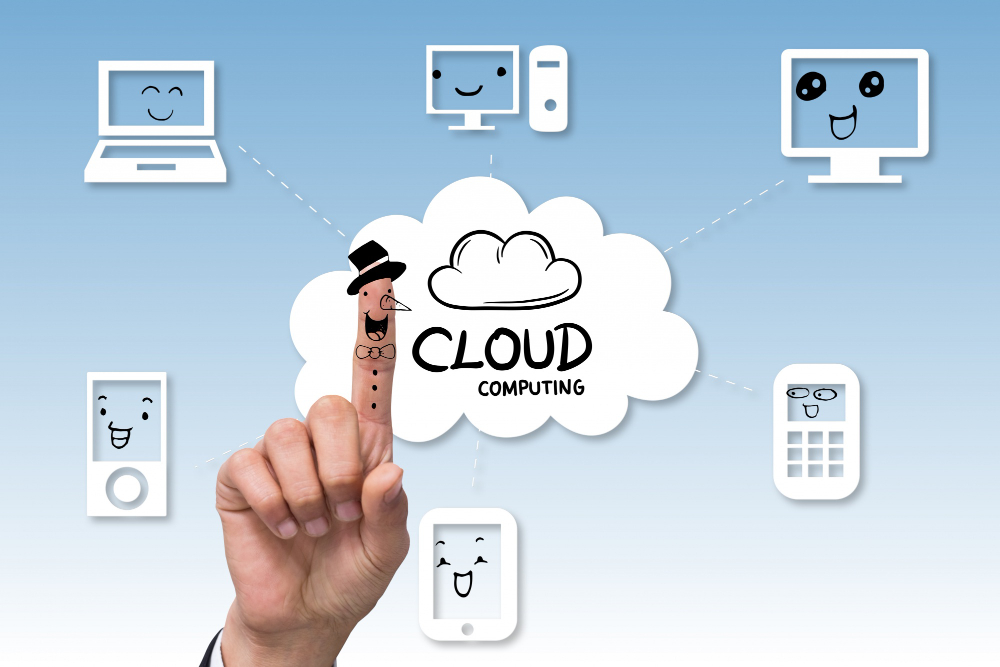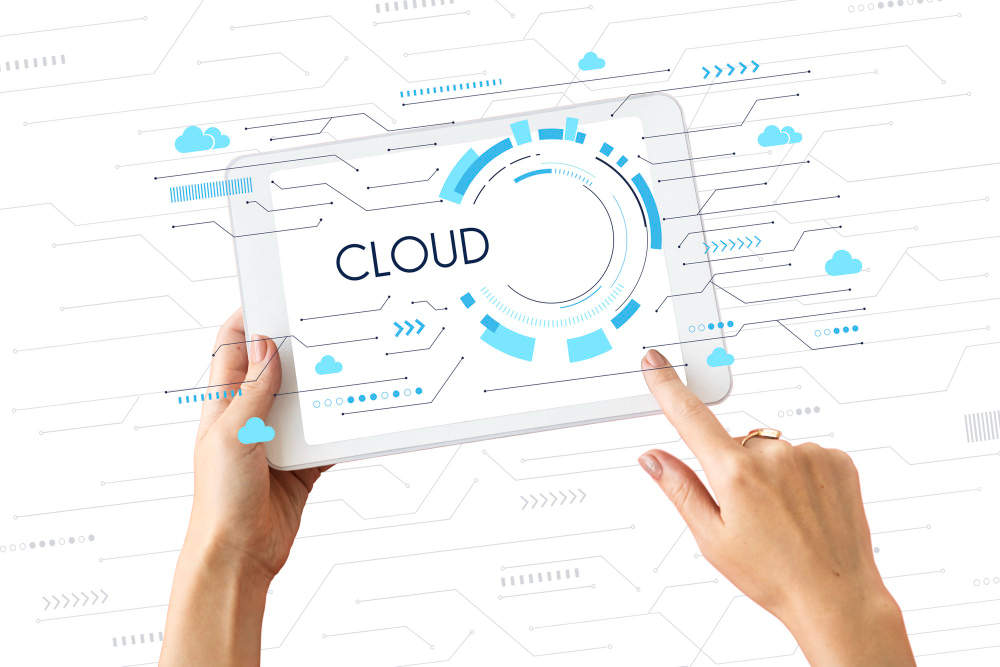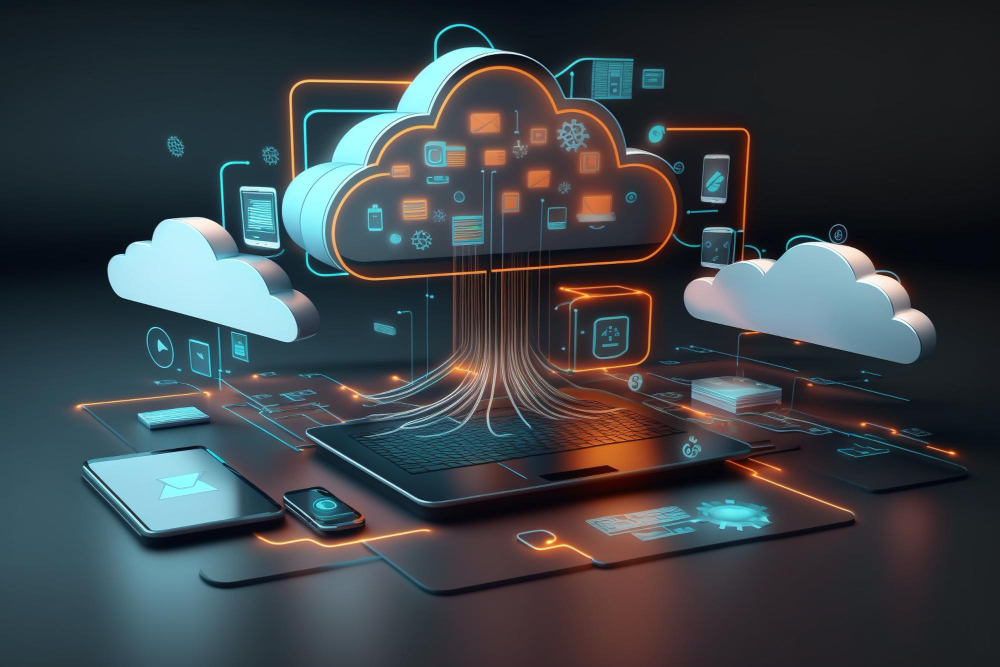Emerging Cloud Computing Trends To Watch In 2024
- 1 8 Emerging Cloud Computing Trends for 2024
- 1.1 AI and Machine Learning Integration
- 1.2 Edge Computing Advancements
- 1.3 Serverless Computing
- 1.4 Cloud Security Enhancements
- 1.5 Hybrid And Multi-Cloud
- 1.6 Real-Time Cloud Infrastructure
- 1.7 Cloud Cost Optimization
- 1.8 Disaster Recovery for Business Continuity
- 2 In Conclusion
The ever-evolving landscape of technology has been significantly influenced by the emergence of cloud computing, which has profoundly impacted various industries. As businesses continue to embrace the digital era, the capabilities and possibilities offered by the cloud have surged to the forefront of innovation, reshaping the way we work, connect, and envision the future.
Cloud computing is essential for agility, scalability, and accessibility in the digital transformation era. It has evolved from a simple storage solution to the backbone of modern IT infrastructure, providing various services for organizations and individuals. Cloud computing has enormous potential to transform operations and support unprecedented growth, making it the top choice for those looking to transform their operations. Consult with IT Support Boston experts to leverage the power of the latest cloud computing trends.
This article will explore the emerging cloud computing trends to watch in 2024.
8 Emerging Cloud Computing Trends for 2024
AI and Machine Learning Integration
One of the emerging trends in cloud computing in 2024 is integrating artificial intelligence (AI) and machine learning. AI and machine learning technologies have already made significant advancements in various industries, and their integration with cloud computing is expected to enhance their capabilities further.
By leveraging the power of the cloud, AI and machine learning algorithms can access massive amounts of data, enabling more accurate predictions, more intelligent decision-making, and improved automation. This integration can revolutionize healthcare, finance, and manufacturing industries by allowing more efficient processes, personalized experiences, and enhanced problem-solving capabilities.
Edge Computing Advancements
One of the latest trends in cloud computing to watch in 2024 is the advancements in edge computing. Edge computing refers to processing and analyzing data at or near the source rather than sending it to a centralized cloud server. This allows for faster response times and reduced latency, which is especially important for applications that require real-time data processing, such as IoT devices and autonomous vehicles.
In 2024 we expect significant advancements in edge computing technologies, including improved hardware capabilities and more sophisticated software solutions. These advancements will enable businesses to harness the power of edge computing to drive innovation and deliver seamless user experiences.
Serverless Computing
Serverless computing is a new trend in the cloud computing industry that allows developers to write code without worrying about managing or provisioning servers. This means they can focus solely on writing code while resources are automatically allocated based on demand. As a result, serverless computing provides greater scalability and flexibility.
In addition, serverless computing can help reduce costs, as businesses only pay for the actual usage of resources rather than maintaining and managing dedicated servers. As more companies embrace the benefits of serverless computing, we expect to see its continued growth and adoption in the coming years.
Cloud Security Enhancements
As cloud computing technology advances, one of the key trends to keep an eye on in 2024 is the improvement of cloud security measures. As businesses rely more on cloud services to store sensitive data and conduct crucial operations, ensuring the security and privacy of this information has become a top priority.
Therefore, cloud service providers must invest in advanced security technologies, such as multi-factor authentication and intrusion detection systems, to ensure the safety of their clients’ data. Additionally, there will likely be a greater emphasis on regulatory compliance and data governance to address data breaches and unauthorized access concerns. Employ Cybersecurity Boston experts to mitigate the potential risks while adopting cloud-based solutions.
Hybrid And Multi-Cloud
Hybrid and multi-cloud environments are emerging cloud computing industry trends. A hybrid cloud combines public and private clouds, allowing organizations to leverage both benefits. It offers increased flexibility, scalability, and security, as sensitive data can be stored in a private cloud while taking advantage of the cost-effectiveness and accessibility of public cloud services.
On the other hand, multi-cloud refers to the use of multiple cloud service providers for different purposes or workloads. This strategy helps organizations avoid vendor lock-in and provides redundancy and resilience in case of service disruptions. As businesses adopt cloud technologies, hybrid and multi-cloud approaches will be crucial in optimizing operations and meeting diverse business needs.
Real-Time Cloud Infrastructure
Real-time cloud infrastructure is one of the emerging trends in cloud computing to watch in 2024. As businesses increasingly rely on real-time data and analytics to make informed decisions, the demand for cloud infrastructure to support these requirements is growing.
Real-time cloud infrastructure allows for the processing and analysis of data in real-time, enabling businesses to access up-to-the-minute insights and respond quickly to changing market conditions. This trend is expected to drive innovation in edge computing, artificial intelligence, and Internet of Things (IoT) applications. By leveraging real-time cloud infrastructure, businesses can gain a competitive advantage by harnessing the power of instantaneous data processing and analysis.
Cloud Cost Optimization
Cloud cost optimization is becoming an increasingly important cloud computing trend. Managing and minimizing costs has become a top priority as more businesses migrate to the cloud. Cloud cost optimization involves analyzing and optimizing resource utilization and implementing strategies to reduce unnecessary expenses.
This trend is driven by the need for businesses to maximize their return on investment in cloud services while ensuring scalability and flexibility. By embracing cloud cost optimization practices, organizations can achieve significant cost savings and improve overall operational efficiency in their cloud environments.
Disaster Recovery for Business Continuity
Disaster recovery is a crucial aspect of business continuity, and it is expected to be a key trend in cloud computing in the coming years. With the increasing reliance on cloud-based systems and data storage, businesses need robust disaster recovery plans to recover from any potential disruptions or data loss quickly.
Cloud-based disaster recovery solutions offer several advantages, including faster recovery times, reduced costs, and increased scalability. These solutions allow businesses to replicate their critical data and applications in the cloud, making it easier to restore operations in the event of a disaster.
In Conclusion
The cloud computing landscape presents a dynamic and rapidly evolving ecosystem. Key trends such as expanding edge computing, serverless architectures, and enhanced security measures are reshaping how businesses leverage cloud technology. As organizations prioritize flexibility, scalability, and efficiency, staying attuned to these future trends in cloud computing will be pivotal in harnessing the full potential of cloud to drive innovation and competitiveness in the years ahead. The ongoing evolution of cloud computing promises a future where technological boundaries enable transformative possibilities across industries.



















